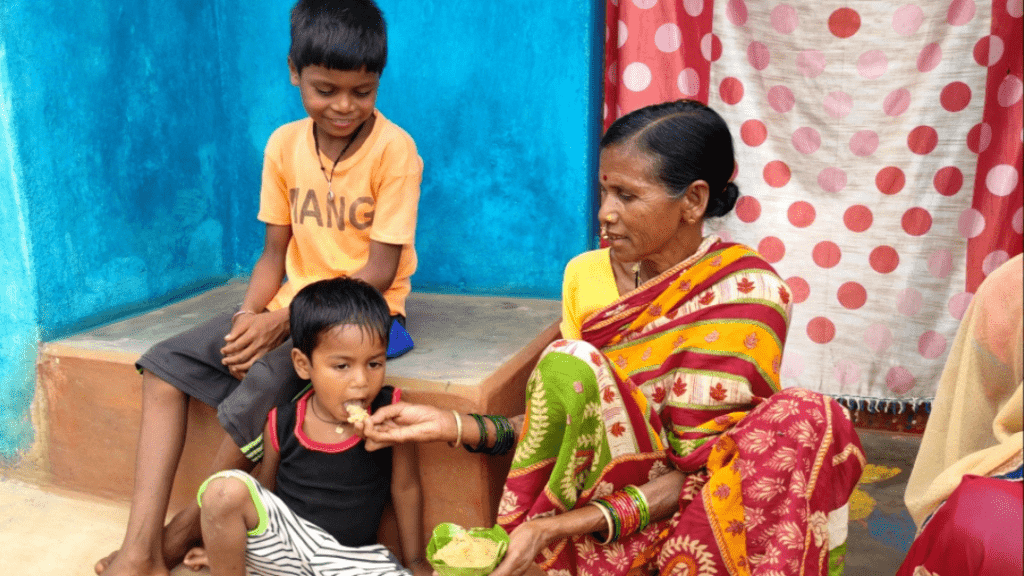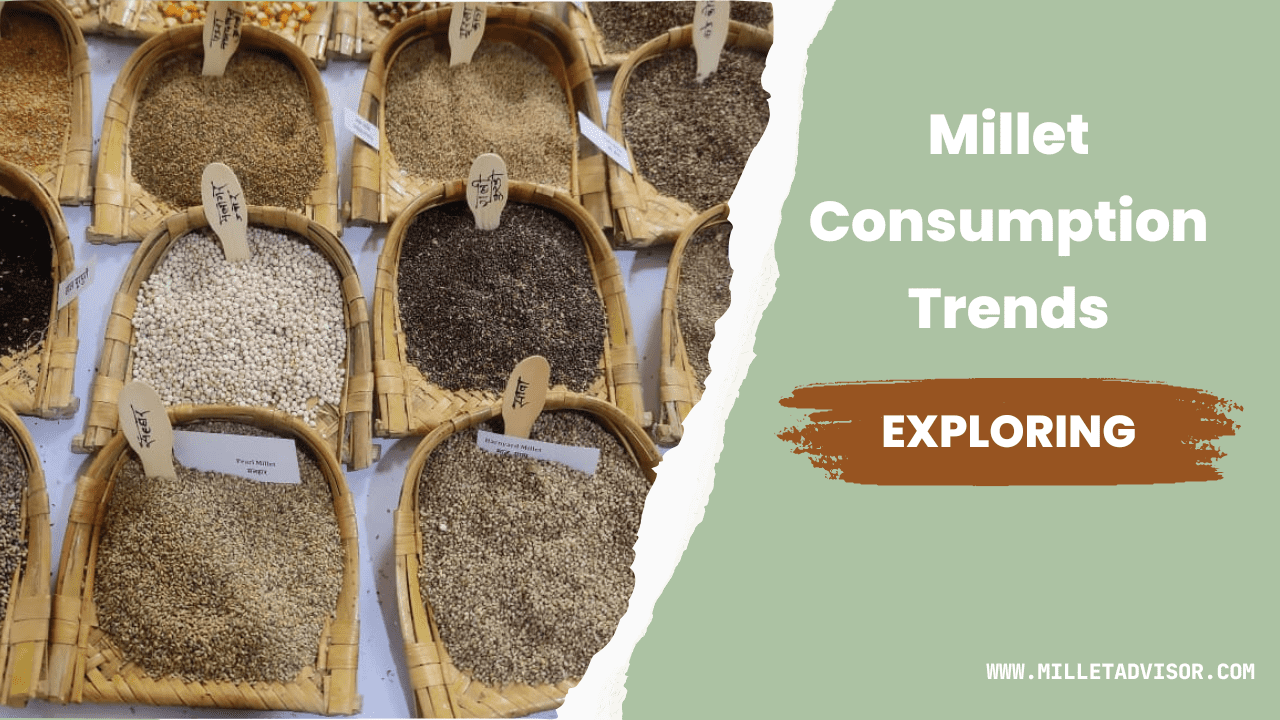Table of Contents
Millet Consumption Trends:
Millet is a group of small-seeded grasses that are widely cultivated for food in various parts of the world. They are known for their resilience and adaptability, thriving in arid and drought-prone regions. Due to their superiority, now termed as Nutri-Cereals. Millets are also highly nutritious, providing a range of vitamins and minerals, including iron, calcium, and B-vitamins. In recent years, there has been a growing interest in millets as a sustainable and healthy food source, leading to an increase in millet consumption across the world. This blog will analyze the current and future trends in millet consumption and their implications for the food industry, health, and the environment.
It has been reported that the consumption of millets in Indian households has decreased. The per capita consumption of millets fell drastically from 32.9 kg to 4.2 kg from 1962-to 2010 (Source: Assessing Millets and Sorghum Consumption Behaviour in Urban India: A Large-Scale Survey, 2021).
The main reasons were the weak value chain of millets including the processing of millets, shelf life, entrepreneurs being unaware of the support from the government, and also there is less development of millet value-added technologies.
But it has been observed that after the COVID-19 pandemic, there is a rise in the consumption of millets in urban areas, and also the demand for millets has gone up significantly across the globe since the breakout of the Russia-Ukraine conflict as Russia and Ukraine have banned the export of millets and its by-products.
There are a few states who have come forward to include millets in the Public Distribution System, mid-day meals in the schools, and ICDS programs. This initiative has marked an increase in millet consumption in rural areas. Odisha Millets Mission is the best model focussing on the consumption of millets in rural and urban areas through different activities.

Millet consumption trends worldwide:
Millet consumption has been steadily increasing worldwide over the past few years. According to a report by the Food and Agriculture Organization (FAO), global millet production increased by 14% between 2013 and 2018. The report also notes that millets are a significant source of nutrition for millions of people worldwide, particularly in developing countries. The majority of global millet production is concentrated in Africa and Asia, where millets are used as a staple food.
Millet consumption trends in specific countries/regions:
India: India is the largest producer and consumer of millets in the world. Millets are widely consumed in various parts of India, particularly in rural areas, where they are used as a staple food. However, in recent years, there has been a decline in millet consumption in urban areas, where people have shifted towards more processed and refined foods. To address this issue, the Indian government has launched various initiatives to promote millet consumption.
Africa: Millet is also an important food source in Africa, particularly in the Sahel region, where it is used as a staple food. Millet consumption has been declining in urban areas in recent years, as people have shifted towards more processed and imported foods. However, there has been a growing interest in millets in some African countries, particularly in the west, where millet-based products are being developed and marketed. For example, in Senegal, there has been a surge in the production of millet-based products such as millet beer, porridge, and couscous. Teff and Fonio are the other types of millets grown in African countries.
Western countries: Millets were grown and known for bird and animal feeds. While millets are traditionally consumed in developing countries, there has been a growing interest in millets in Western countries as well. In recent years, there has been a surge in demand for gluten-free and plant-based foods, which has led to an increase in millet consumption. Slowly, millets from India are taking a place on the shelves of retail and supermarkets. Millets are also used in various processed foods, such as bread, crackers, and cereal bars. However, the millet industry in Western countries faces various challenges, including the lack of awareness of millets, limited availability, and high production costs.
There are many factors that have helped in the rise of millet consumption in urban areas. Let us see the most appropriate ones.
- Convenience-seeking products
- Health-Conscious Consumers
- Increasing Urbanization
- Rise in disposable Income
- Acceleration of e-commerce
In the present and future context, millets are becoming the main ingredients of products due to their versatile properties and richness in nutrient contents. Let us see the trends where millets will be playing an important role.
- Digestive wellness: Millets are rich in fiber that contains both soluble and insoluble fiber. As you know, the insoluble fiber in millet acts as a prebiotic and it supports good bacteria in the digestive system. The presence of fiber combats constipation.
- Gluten-free products: Millets being 100% gluten-free, makes its presence in the products suitable for celiac patients. The gluten-free trend is increasing in India and also abroad. In the United States, it is adopted at an 8-10% rate.

- Plant-based products: In the world of plant-based food technology, there is always the search for new plant ingredients with useful functional properties, exceptional flavors, and sustainable benefits to create plant-based alternatives to animal products like meat and milk. Millet is rich in protein and can cater to the need for protein in our body and also the milk extracted from millets can reduce the dependency on animals.
- Snackification: For a long time, snacking had been associated with unhealthy foods like deep-fried and loaded with high amounts of salt and sugar. But now there is a paradigm shift towards a healthy snack version.
According to the Godrej Food Trends 2022, report, 55.6 percent of the culinary panel predicted a growing desire among the people to rediscover cultural roots and support locals through food and 55.6 percent predicted millet-based snacks will be in demand.
- Sportification: The sportification trend will continue to influence a wide range of food and beverages as consumers are looking for protein as well as healthy and safe energy to reach their goals. So, the product developers will have to work with functional ingredients to develop food such as snack bars and plant-based beverages that will deliver sustained energy for both mental and physical performance.
Millets have the ability to act as functional ingredients to fit into the upcoming sportification trend.
- Personalization: The trend of personalization can be seen in everything from entertainment to food. You might have heard a song on Spotify. They provide a personalized curated song list as per your choice and interests. In the same way, it works on food taking the data of the consumers and the problems faced by them. It gives the users a better experience because it requires no conscious input and involves no effort from the users. The products made from millet ingredients can solve the problem of the consumers in a better way.
- Good Carbs Bad Carbs: Carbohydrates are naturally found in plant-based foods and these are typically good carbs, this type of carb is called complex carbs. Complex carbs break down more slowly allowing a more gradual release of energy.
But bad carbs are simple carbs that convert to sugar at a much faster rate that can spike blood sugar in our body. Complex carbs promote a healthy digestive system, regulate hormones, support weight loss, and provide sustainable energy. All millets contain complex carbohydrates and come under the category of good carbs.
Implications of millet consumption trends:
Health benefits of millet consumption: Millet is a highly nutritious food, providing a range of vitamins and minerals, including iron, calcium, and B-vitamins. Millets are also a good source of fiber and protein, making them an ideal food for people looking to maintain a healthy diet. Research has shown that millets have various health benefits, including reducing the risk of heart disease, diabetes, and certain types of cancer.
Environmental benefits of millet production: Millet production is highly sustainable and environmentally friendly. Millets require less water and fewer fertilizers and pesticides than other crops, making them ideal for drought-prone regions. Millets are also highly adaptable and can thrive in various soil types and climate conditions. Therefore, increasing millet production can help reduce the environmental impact of food production and improve food security.
Challenges and opportunities in the millet industry:
Despite the increasing popularity of millets, there are still several challenges that the industry faces. Due to a lack of awareness of millets and their benefits. Many people are not familiar with millets and do not know how to cook or incorporate them into their diets. This lack of awareness has also led to limited availability of millets in supermarkets and grocery stores.
Another challenge is the limited infrastructure for millet production and processing. Millet production is done by small and marginal farmers, where there is limited access to modern farming equipment and technologies. Additionally, there are limited processing facilities for millets, making it difficult to scale up production and meet the growing demand for millet-based products.
However, there are also many opportunities in the millet industry. The growing demand for healthy and sustainable foods presents an opportunity for millet producers to expand their markets and increase their profits. There is also an opportunity to develop innovative millet-based products that can appeal to a wider range of consumers.
Conclusion:
In conclusion, the consumption of millets is on the rise worldwide due to their nutritional benefits, sustainability, and adaptability. Despite the challenges faced by the industry, there are opportunities for millet producers to capitalize on the growing demand for healthy and sustainable foods. The promotion of millets as a staple food can also help improve food security and reduce the environmental impact of food production. By increasing awareness and investment in the millet industry, we can ensure that millets continue to be a valuable food source for generations to come.
Author: Tapas Chandra Roy, A Certified Farm Advisor on Millets, ‘Promoting Millets from Farm to Plate’ and an Author of the book -” Millet Business Ideas-Empowering Millet Startups”. In a mission to take the forgotten grains- Millets to Millions. To remain updated on my blogs on Millets please subscribe to my newsletter and for any queries please feel free to write to [email protected]


